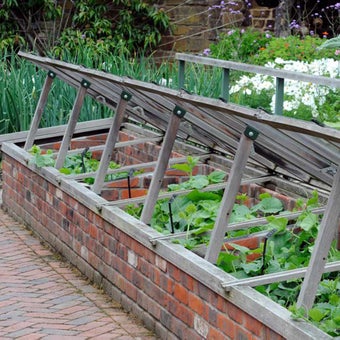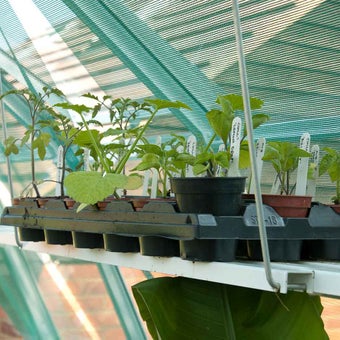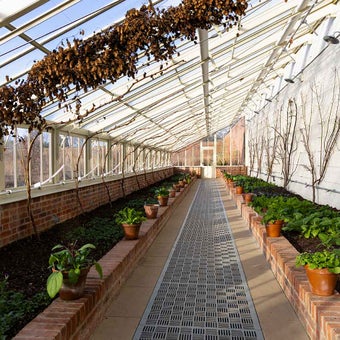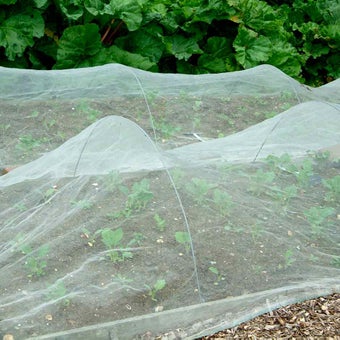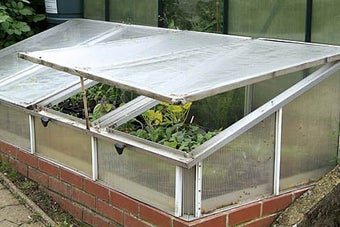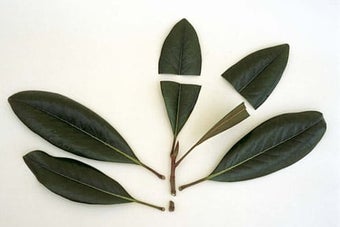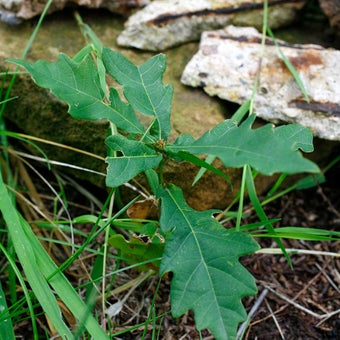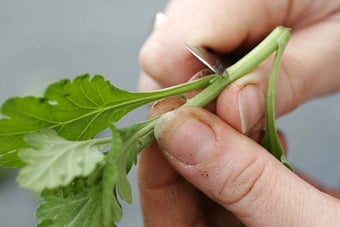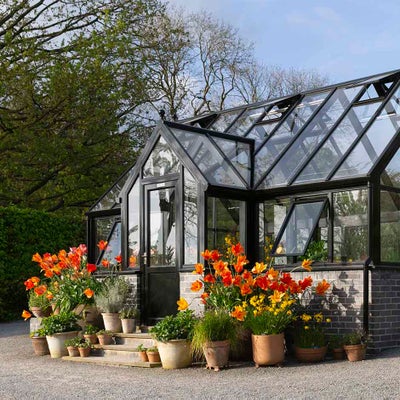
Quick facts
Glass transmits and holds more light than plastic glazing so has the fullest range of uses
Polycarbonate plastic glazing is durable and holds in heat well
Cedarwood is more durable than treated softwood but less durable than aluminium
Taller glasshouses transmit light more efficiently
Roof vents are very important
Why use a greenhouse?
Growing under glass provides a protected environment ideal for raising , overwintering tender plants, growing crops such as tomatoes, or even cultivating plants that need protection year-round. Greenhouses allow the gardener to extend the growing season, sow plants earlier and provide the ideal place for rooting cuttings.
Where to site a greenhouse
Ideally, greenhouses should be sited where they can receive uninterrupted sun throughout the day. Provide screening or shelter from cold northerly or easterly winds, which can keep temperatures low in spring and slow the growth of and young plants.
An east-west orientation will slightly extend light levels during winter. A north-south orientation is suited to summer crops such as tomatoes, with both sides receiving several hours’ sun from the east and the west. With this orientation, the end timbers will reduce the amount of sun reaching the house during the hottest midday period. Decide when you plan to use your greenhouse most, and orient it accordingly if you can.
Product choice
Wood or aluminium?
Aluminium is usually the material of choice for a glasshouse, whether in natural metal or with a painted finish. A coloured frame may fit into the garden better, especially if the structure can be seen from the home. Aluminium needs no upkeep, and the glazing bars are thin, casting little shade.
Wood is an attractive, traditional building material and better-suited to some garden styles. However, it needs periodic upkeep unless you specify more expensive and lower maintenance cedar-wood timber. Wooden frames tend to be bulkier than aluminium and can cast excessive shade inside the greenhouse.
Shape and size
The taller a glasshouse is at the eaves, the better the light transmission and therefore the wider the range of plants that may be grown. The eaves should be at least 1.5m (5ft) tall, and ideally 1.8m (6ft) or more.
The ridge should be at least 60cm (2ft) above the eaves to allow a door that gives easy access, sufficient slope to shed rain and to encourage loss of excess heat.
Glazing to ground level gives the greatest flexibility, but half-walling, using masonry or timber will reduce heat loss.
Domes and other odd-shaped glasshouses can prove more difficult to manage, especially when trying to ventilate efficiently, and they tend to be more expensive than the traditional shape.
Ventilation
It is important to ensure a greenhouse has sufficient . Roof vents are the most useful, and ideally should be on both sides of the ridge and equivalent to 15-20 percent of the floor area. Side vents are no substitute for roof ventilation, and while louvred vents allow regulation of air flow, they are hard to draught-proof in winter.
Automatic openers that open or close in response to greenhouse temperatures are useful, but slow to respond and need supplementing with manual control, such as opening some windows and the door each morning. Motorised vents activated by sensitive heat sensors are more efficient, but may be too costly for home use.
Glass or plastic glazing?
The best glazing material is glass, as it lets 90 percent of light through, does not degrade in sunlight and, unlike plastic materials, reflects heat radiated from within the glasshouse back into the structure instead of being lost.
Toughened glass should be used for doors and anywhere where people might fall onto the glass.
Double glazing and special glasses that alter the spectral composition of sunlight are often used for conservatories, but are less suitable for cultivating plants as the reduced light quantity and quality affects plant performance.
Polycarbonate sheeting is a twin-walled plastic glazing that has the advantages of being resistant to breakage, lightweight, durable in adverse weather, and good at retaining heat. However, clear polycarbonate only transmits 83 percent of the light – considerably less than glass, and this may limit its use for growing , and plants that require high light levels.
Twin-walled acrylic plastic glazing is also available. It transmits 85 percent of the light that hits it, but is more brittle than polycarbonate, tending to crack during installation.
Greenhouse alternatives
Polythene tunnels
Polythene tunnels (polytunnels) are a highly cost-effective means of growing summer crops, such as tomatoes or cucumbers, but are rather unsightly and not usually economical to heat and keep frost-free over winter. Although they can be used for growing hardy winter crops such as lettuces, they cannot be used for overwintering tender plants.
Cold frames
A is simply a box with a sloping glazed lid (either glass or plastic glazing) and is a traditional means of protecting plants to supplement, not replace, a greenhouse. Cold frames are used to plants, overwinter plants, sow seeds that need cool conditions and to root cuttings.
The sides may be made of masonry, timber, metal or glass. Typically, cold frames are 45–60cm (18in-2ft) deep and the lid can be opened to varying degrees to control the temperature. They are seldom heated, but the addition of a soil-heating cable in a sandbed at their base can greatly enhance their usefulness for propagation and overwintering tender plants.
Mini-greenhouses
A useful choice for small gardens, mini-greenhouses are tall, usually plastic-covered, boxes (with shelves) and are open at the front. They are much better than windowsills for raising , and are ideal for summer crops of plants too tall for cold frames, such as aubergines, peppers and tomatoes. However with only a small air volume need careful management to avoid extremes of temperature.
